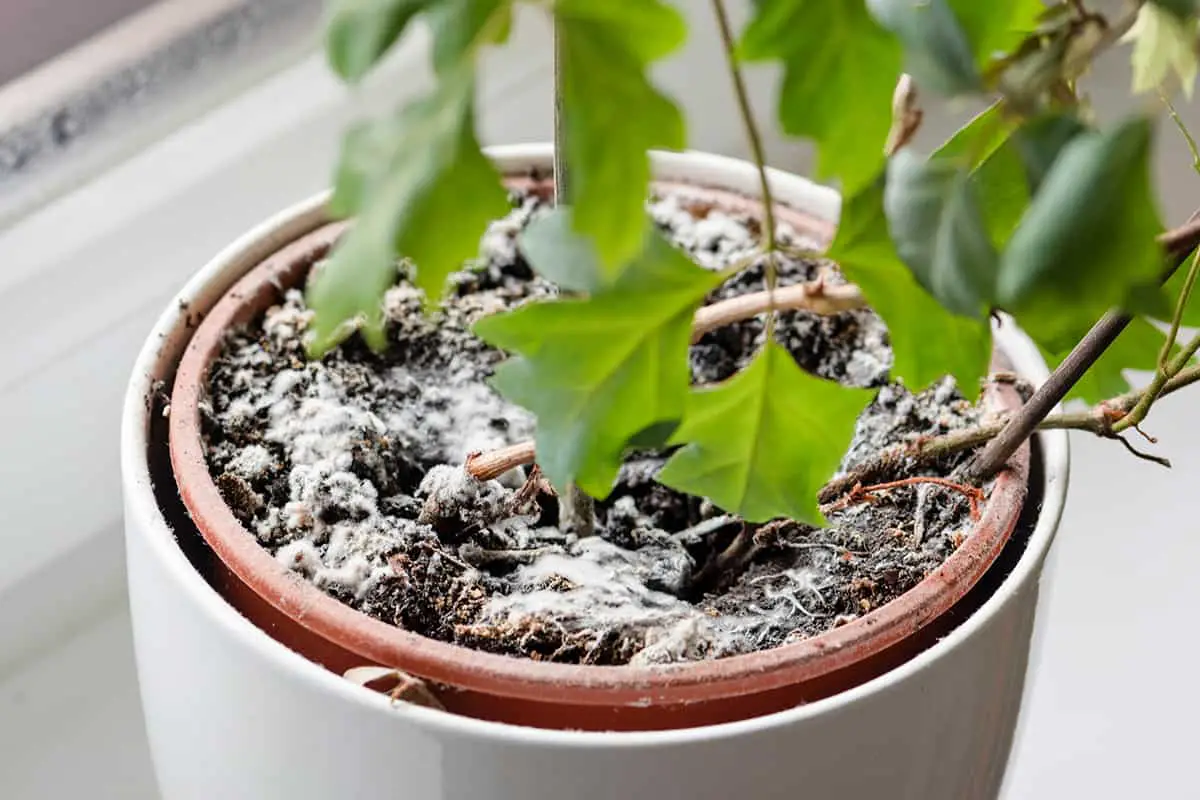White mold on your houseplant soil can be an alarming sight, especially when you’ve been carefully tending to your beloved plants. This common issue, though unsightly, is not always harmful to your plants and is usually manageable. In this article, we’ll discuss the causes of white mold and offer practical solutions to fix and prevent it.
Identifying White Mold
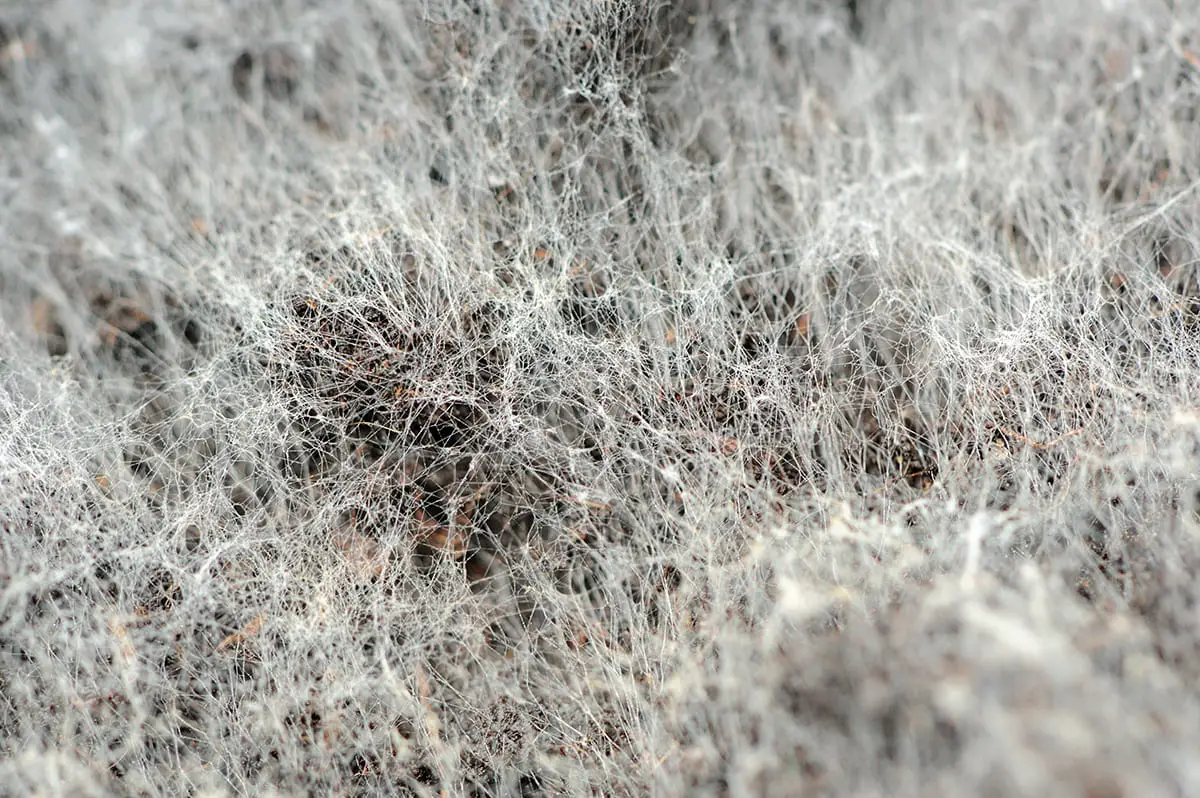
Common Characteristics
White mold is a common fungus affecting houseplant soil. You might notice a cottony, white layer on the soil surface, which can extend to the base of the plant stems. This mold thrives in moist, cool conditions and can spread to various parts of the plant, causing deterioration and wilting. The mold is characterized by the formation of hard, black structures called sclerotia, which enable it to survive in soil and plant debris for up to 5 years.
White Mold Vs. Harmless Fungi
It’s essential to distinguish between white mold and harmless fungi that can also be found on houseplant soil. Saprophytic soil fungi, for example, can appear as white or yellow mold-like growth on the soil surface or rim of pots. However, these fungi are not harmful to your plants and usually disappear on their own with proper care. While white mold often has a dense, cottony web-like structure, harmless fungi may appear as powdery or disorganized growth and might not adhere to plant stems.
When you identify white mold on your houseplant soil, it’s crucial to take action to prevent damage to your plant and stop the spread of the fungus. By observing the specific characteristics of white mold and distinguishing it from harmless fungi, you can accurately diagnose the problem and apply the appropriate remedy.
Causes of White Mold
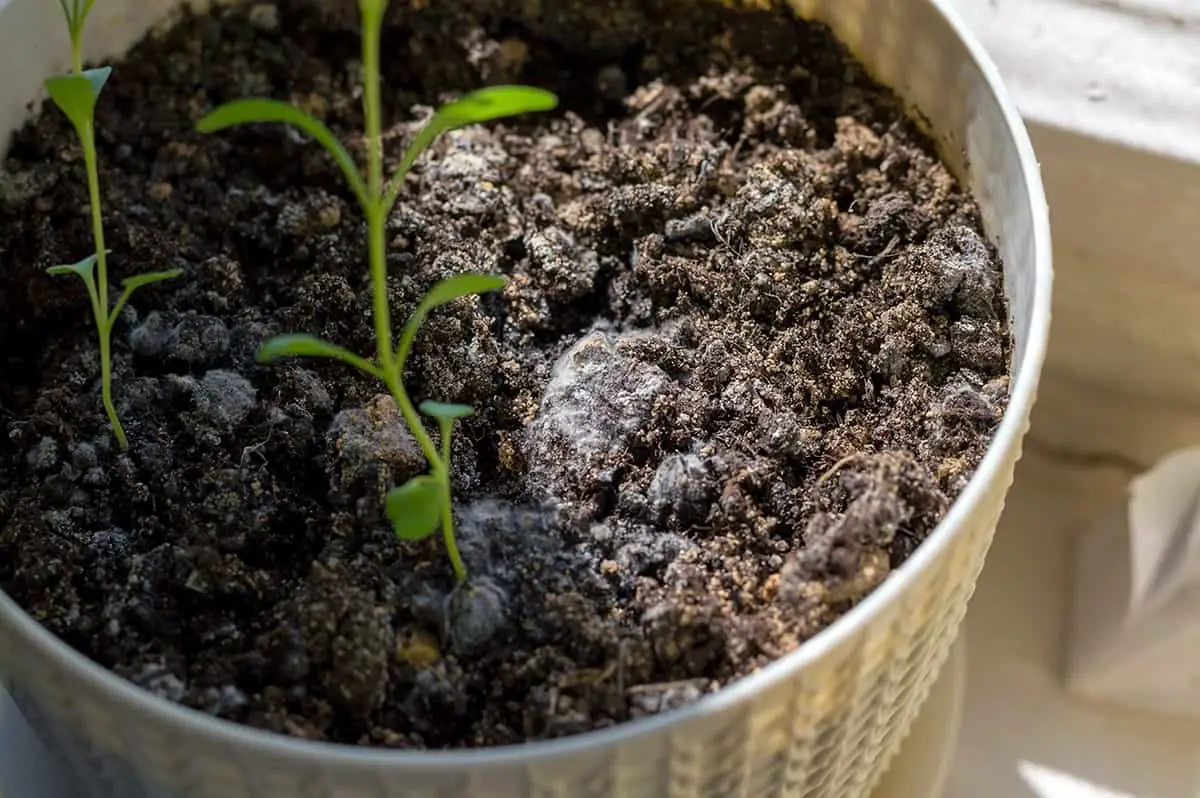
Excessive Moisture
One primary cause of white mold on your houseplant soil is excessive moisture. When the soil remains moist for extended periods, it creates an ideal environment for mold growth.
Poor Soil Conditions
Poor soil conditions can also lead to white mold growth. For example, soil that is heavily compacted or has an imbalance of nutrients can harbor mold.
Overwatering
Overwatering is another common cause of white mold on houseplant soil. When plants receive too much water, it can lead to root rot and mold growth in the soil.
Lack of Air Circulation
Poor air circulation can also contribute to mold growth. Stagnant air and high humidity around your houseplants create an environment that encourages mold development.
Leaf Decomposition on Surface
Leaves and other organic debris that fall onto your houseplant soil can lead to white mold growth. As these materials decompose, they create a moist environment that allows mold to thrive.
Preventative Measures
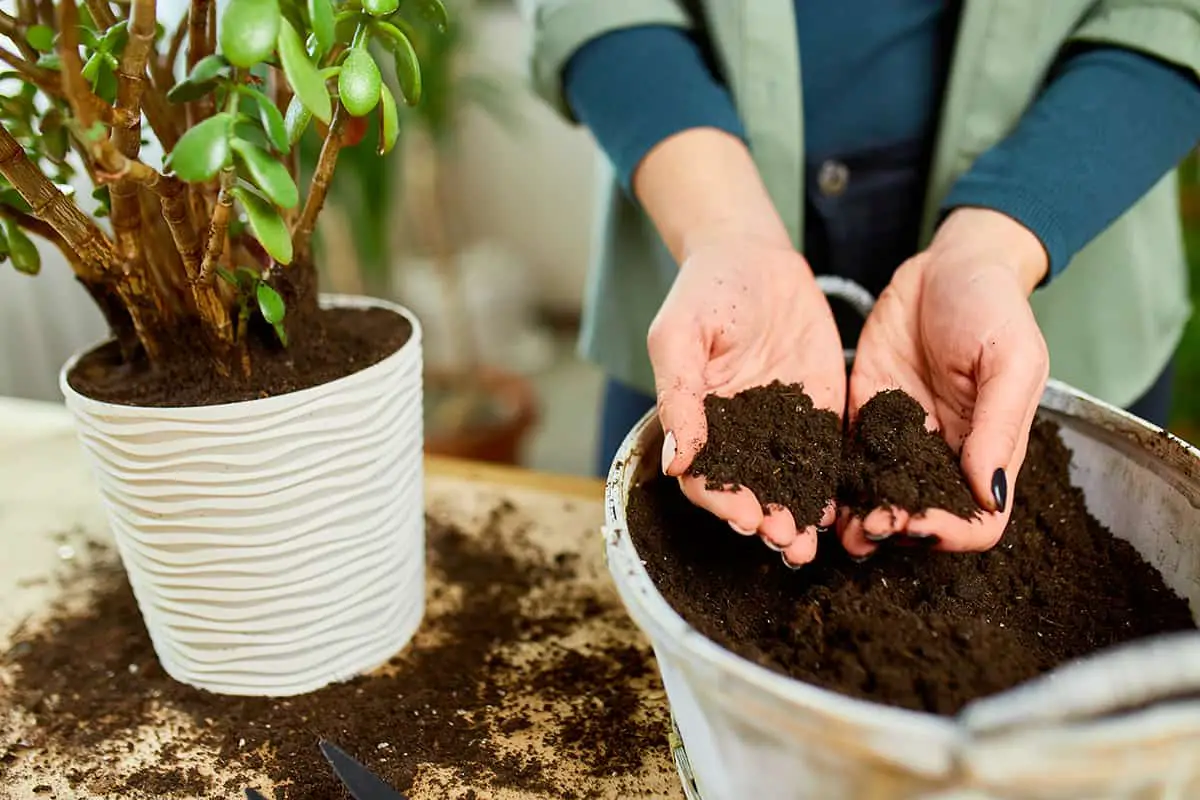
Proper Watering Techniques
To prevent white mold on houseplant soil, start by adopting proper watering practices. Water your plants only when the soil is dry to the touch, and apply water until it drains from the bottom of the pot. Avoid overwatering, as it creates a conducive environment for mold growth.
Soil Quality and Drainage
Investing in high-quality soil and ensuring proper drainage are crucial steps in combating white mold. Use well-draining soil mixes that allow water to pass through easily, preventing standing water in the pot. Adding perlite can improve soil drainage and aeration.
Plant and Soil Maintenance
Maintaining your plants and their environment can help prevent white mold. Regularly remove dead leaves, debris, and any white mold from the soil surface. Grow your plants in a well-ventilated area with enough space for air circulation. Additionally, consider treating the soil with a fungicide if mold issues persist.
Treating White Mold
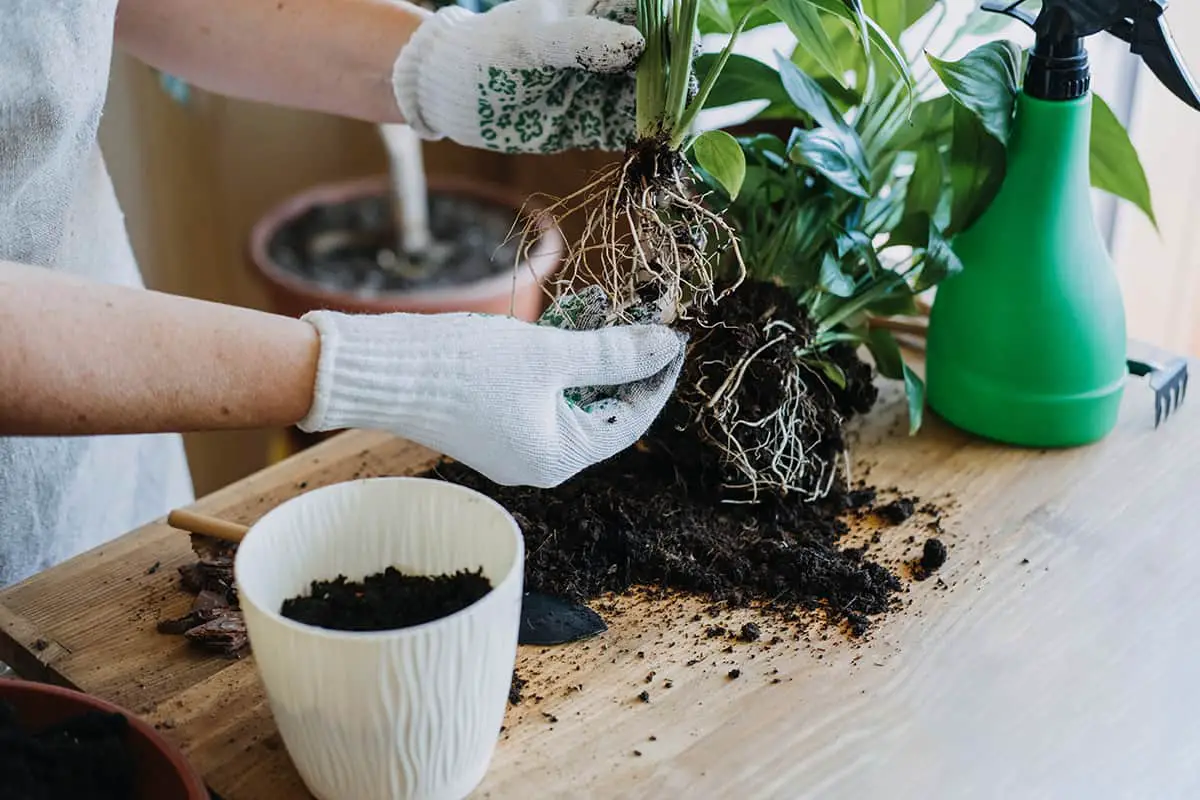
Isolation of Affected Plants
First, it’s essential to isolate the affected houseplants. This step prevents the spread of white mold to other plants in your home. Carefully remove the infected plant from its location, and place it in a separate area.
Removing Mold Manually
To remove the mold from your houseplant soil, gently scrape away the white, fuzzy substance. Make sure to discard the mold in a sealed bag or container to avoid spreading fungal spores throughout your home. After removing the mold, consider replacing the top layer of soil with fresh, sterilized soil to prevent the mold from returning.
According to the University of Minnesota Extension, white mold is caused by the fungus Sclerotinia sclerotiorum. Addressing this issue involves controlling the humidity and temperature in your home, ensuring your houseplants have proper air circulation, and watering the plants less frequently or using water that has been allowed to sit at room temperature for 24 hours, as recommended by the Clemson University Home & Garden Information Center.
Fungicide Options
If the white mold persists, you may need to resort to using fungicides to treat your houseplants. Always follow the manufacturer’s instructions when applying fungicides, and choose products that are safe for indoor use. Make sure to wear protective gloves and a mask while handling these chemicals to avoid inhaling potentially harmful substances.
